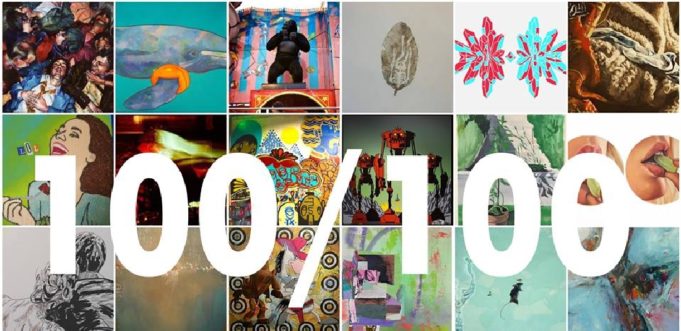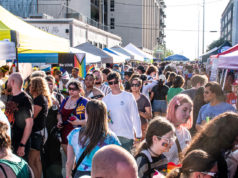Last week, installation artist and Fort Worth Weekly art critic Christopher Blay weighed in on an April 23 art show through his online Weekly art column, “Untitled.”
The event, 100 for 100: 100 Artists for 100 Dollars & Under, was held at Shipping and Receiving and organized by three local artists (Dee Lara, Brandon Pederson, and Jay Wilkinson) with the goal of selling a slew of art priced around $100. According to event organizers, the show drew more than 1,000 culture vultures and netted more than $10,000 in sales.
Selling art is great, Blay said in his article, but the “endeavor actually sabotages artists who already face an uphill battle for representation, patronage, and recognition for their work.”
How? By cheapening works that might sell for $1,000 or more at an established art gallery, he argued. Indeed, there were artists at the sale who also regularly show pricier pieces at Fort Works Art and elsewhere.
Photographer and 100 for 100 organizer Dee Lara doesn’t buy that argument, though. At her request, I sat down with her and local musician and installation artist James Talambas, who volunteered at the event, to hear their side.
Fort Worth Weekly: How do you respond to the assertion that the show undervalued artists’ works?
Lara: I understand [Blay’s] advice to artists not to undersell work. We weren’t advocating that this be the standard in Fort Worth. We weren’t telling participants to always price work at $100. This was a one-time opportunity for buyers and sellers to come together. We were very clear in what we told the artists: Bring old works and small works that are worth $100 to you. That’s not a new concept. A lot of famous artists make prints that are significantly less expensive than what an original work would cost. We also sold several pieces for $200 or $300.
Weekly: What business model informed how the show was organized?
Talambas: The trends that you’re seeing in the music and art business worlds are lifestyle-oriented branding and decentralization. Each artist can now create [his or her] own brand. When you buy a work by Jay Wilkinson or Jesse Hernandez, you’re buying into the feeling of what that artist means to you. In the old model, the artist forfeited [his or her] brand to a gallery or management. Now with social media and a [new generation that wants to meet the artists in an experiential way] that model is no longer working. What the event did was bring that personalization to the forefront. We had 100 artists who weren’t folk artists. These were gallery artists in a group show. The artists were right there with the patrons. That helps to sell art.
Weekly: Why aren’t all these artists going the gallery route?
Lara: There’s a pervasive elitism that controls and runs the gallery system. You go to a gallery because the gallery has connections with buyers who have enough money to spend $1,000 or more. Those buyers are asking the gallery owners to be their tastemaker, and those few people have the resources to decide what’s good. In Dallas and Fort Worth, the majority of artists represented [in established galleries] are white males. More than 50 percent of our artists [who participated in the event] are female.
Weekly: Do events like 100 for 100 fit into a long-term plan?
Lara: We can talk until we’re blue in the face about why artists aren’t applying for grants and why people in positions of power aren’t creating them. The fact is that, [for many], it isn’t getting done. So there has to be something in the intervening time. We have to mobilize, have these group shows, and create a new audience. Otherwise, those other opportunities are not going to happen. What good are your visions if they are sitting in a closet? You have to find your audience. You can’t wait for the audience to find you, because that’s clearly not working.












